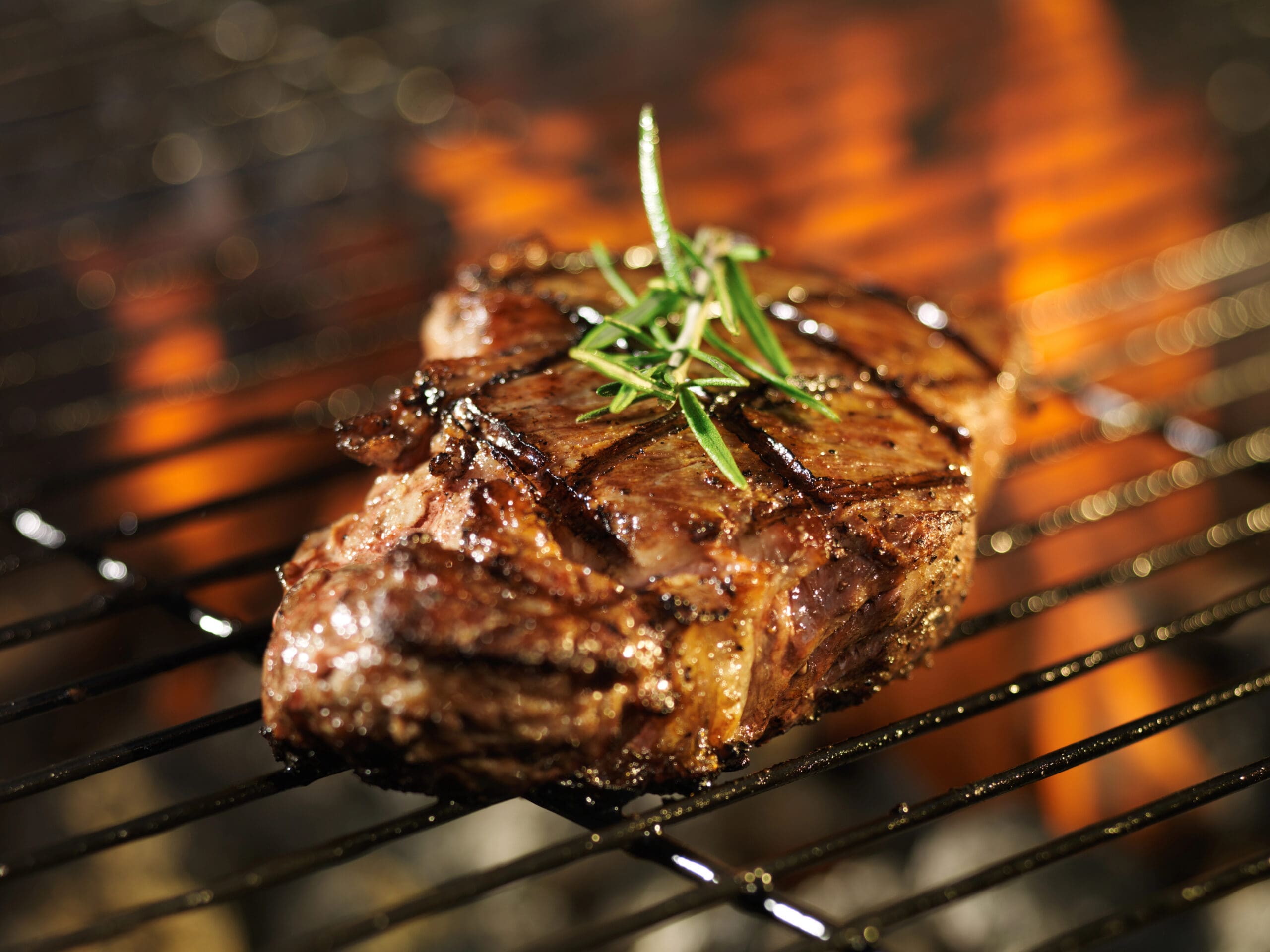
How to Oven Cook New York Strip Steak
When cooking a New York strip steak, there are a few key considerations to keep in mind to ensure a delicious result. We will give you some expert tips on preparing and cooking the perfect […]
One of the best things about different cultures is the diversity of foods they offer to the world. Every country makes use of the most abundant ingredients found on their lands, creating dishes that remain staples in their tradition. Today, we are casting light over the Levant region, exploring their culinary world, where succulent dishes exist.
In case you are not familiar with the Levant region, it embraces several Arab countries that share almost the same dialect and a similar culture. This includes Lebanon, Syria, Palestine, and Jordan. Levantine cuisine represents a significant part of the main dishes found in the Arab world as well. They love including tahini, olives, chickpeas, and feta to give their meals a unique flavour.
Some deem Egypt to be part of the Levant region. While some Egyptian dishes bear a remarkable resemblance to Levantine cuisine, they don’t belong to the same area. You can tell from the Arabic dialect spoken, which differs in Egypt from those countries.
We have gathered for you the best Levantine dishes to try out and embark on a delectable culinary journey across the Arab lands. So, let’s get started!
Similar to most cuisines around the world, there are a lot of succulent plates to fall in love with when it comes to Levantine food. However, the ingredients used and the cooking style make the Levantine dishes so unique. Levantine cuisine gained a lot of popularity worldwide, given its highly nutritious value. So, let’s go through the best dishes to try from this incredible region.

Levantine dishes include lots of highly nutritious salads with a tasty spin that gives them a unique flavour. Tabbouleh is one of the most popular Levantine salads, especially in Lebanon and Syria. It consists of tomatoes, cucumber, lots of parsley, onion, bulgur, and mint. All of these ingredients are chopped into small pieces to make eating easier.
Things don’t just end here. This deliciously nutritious salad is seasoned with lemon juice, olive oil, and sweet pepper, making the salad anything but dull. Variations may occur across different regions, where some people prefer adding lettuce or using semolina. We cannot stress enough how healthy and nutritious this salad dish is, not to mention its unique flavour.

Fattoush is another famous salad from Levantine cuisine that has a savoury flavour and is an excellent option for vegetarians. Unlike tabbouleh, fattoush is more prevalent in Lebanon than in any other Levantine country. However, it is still consumed among all communities in the Levant and even far beyond that.
Fattoush salad consists of mixed greens and vegetables, including lettuce, tomatoes, onions, cucumber, parsley, bell peppers, and mint leaves. It is seasoned with olive oil and lemon juice to boost the flavour. The vegetables in this dish are cut into large pieces, including pieces of “Khubz,” bread in Arabic. The bread is more often toasted, adding a nice crunch to the salad. In some regions, people call it the “bread salad.”

“Shawarma” comes from the Turkish word “çevirme,” which means “to spin,” and that is how this popular Middle Eastern dish is made. The meat cut is put into a cone-like shape and turns slowly while the meat is cut into finely thin slices. It is one of the most popular sandwiches from the Levantine cuisine, especially in Syria and Lebanon.
The origin of shawarma has been debated, claiming that this food idea originated in Turkey during the Ottoman Empire and then found its way into the Arab world. Others believe it to be Greek since it bears a great resemblance to their gyros. No matter where shawarma comes from, its palatable taste is agreed on by most food lovers, if not even all of them.
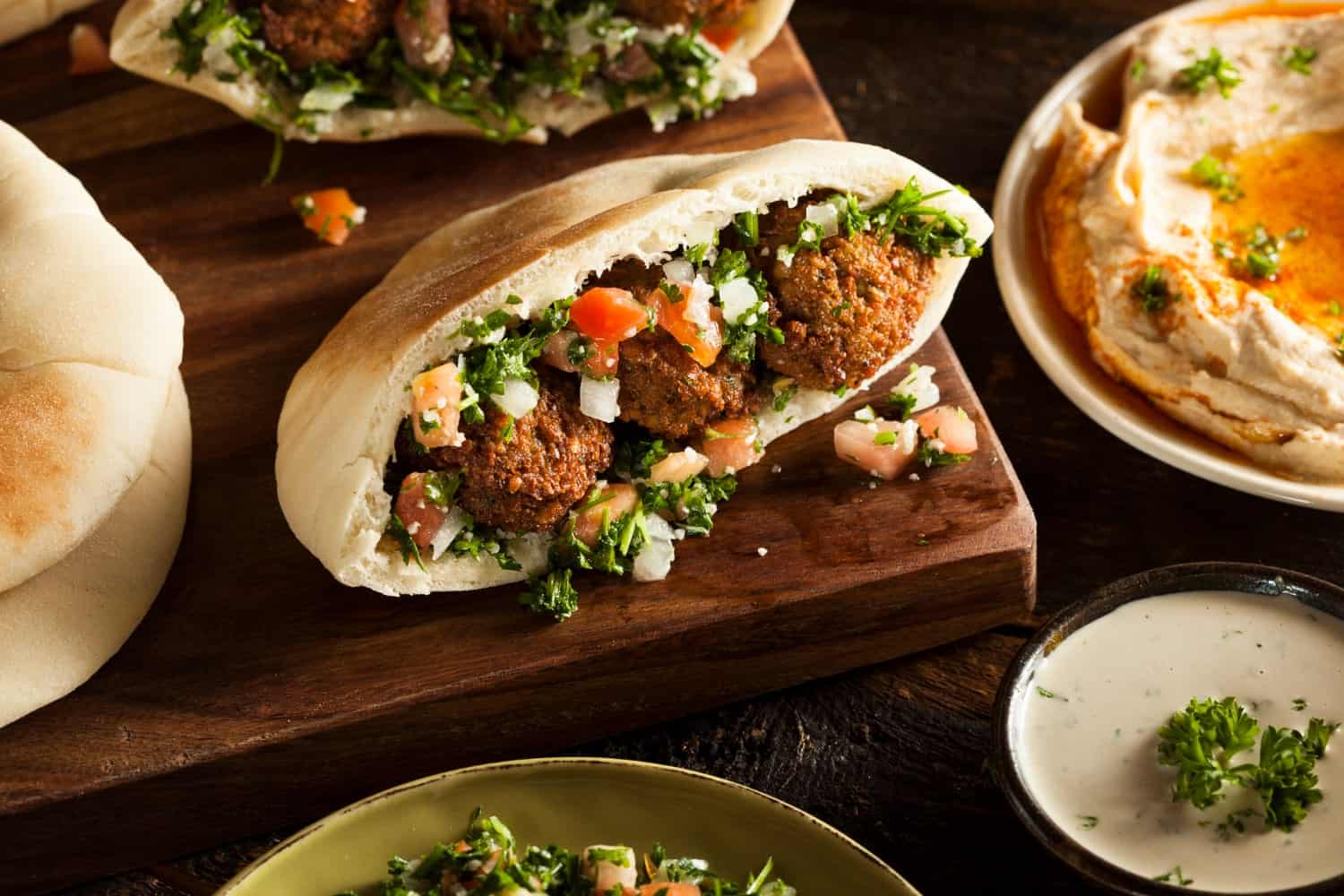
Falafel is one of the most popular street food in the Middle East, especially in Egyptian and Levantine cuisines. These deep-fried balls are made from either broad beans or chickpeas. In some cases, it is made from both of them together. Falafel has gained more popularity for being suitable for most vegan and vegetarian diets.
The origins of falafel may not be clear, but many people deem it Egyptian, and others claim it is a Levantine dish. In any case, this doesn’t stop people from enjoying these highly nutritious patties laden with fibre that can offer you satiety at any given time. The best part is that falafel plays many roles; it can be an appetiser, a snack during midday, or a fulfilling sandwich for dinner.
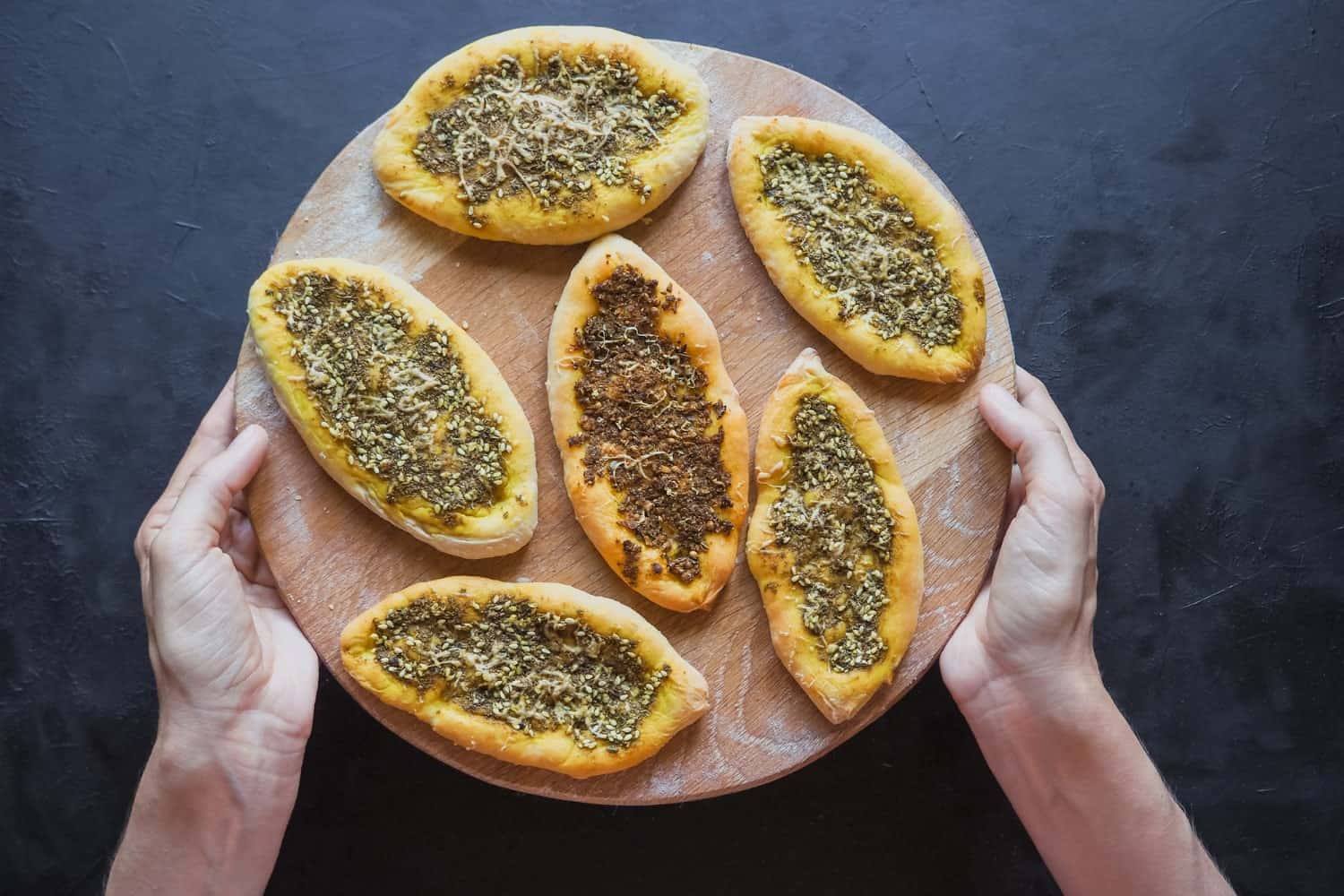
Mana’eesh is the popular form of man’oucheh, a typical dish from Levantine cuisine. It is also sometimes called Fatayer in some regions, including Egypt. Some people believe it to be the Middle Eastern version of pizza, for it is a spread-out dough with several ingredients that go on top before it enters the oven to get baked to perfection. Well, they sound pretty much alike.
Mana’eesh comes in different shapes and sizes, with a wide array of ingredients used to offer various tastes that are all equally tasty. Man’oucheh is more commonly topped with any type of meat, either ground beef or chicken, along with cheese, thyme, tomatoes, and bell peppers. There is also a vegetarian version where there is no meat and only cheese with various greens. It can be eaten either sliced like a pizza or folded like a sandwich.

Kibbeh is a delectable appetiser served before the main course and one of the most popular in Levantine cuisine and other Middle Eastern regions. This dish is based on ground meat shaped into croquette-like balls and fried to golden perfection, or shall we say brown in this case?
Kibbeh mixes ground beef, bulgur, onions, herbs, and grains. They are all grounded and mixed with wheat, which helps the delicacy hold its oval ball-like shape. It is then fried and served alongside the main dishes. This meal has lots of nutritional value since it provides the body with sufficient protein, minerals, and vitamins.
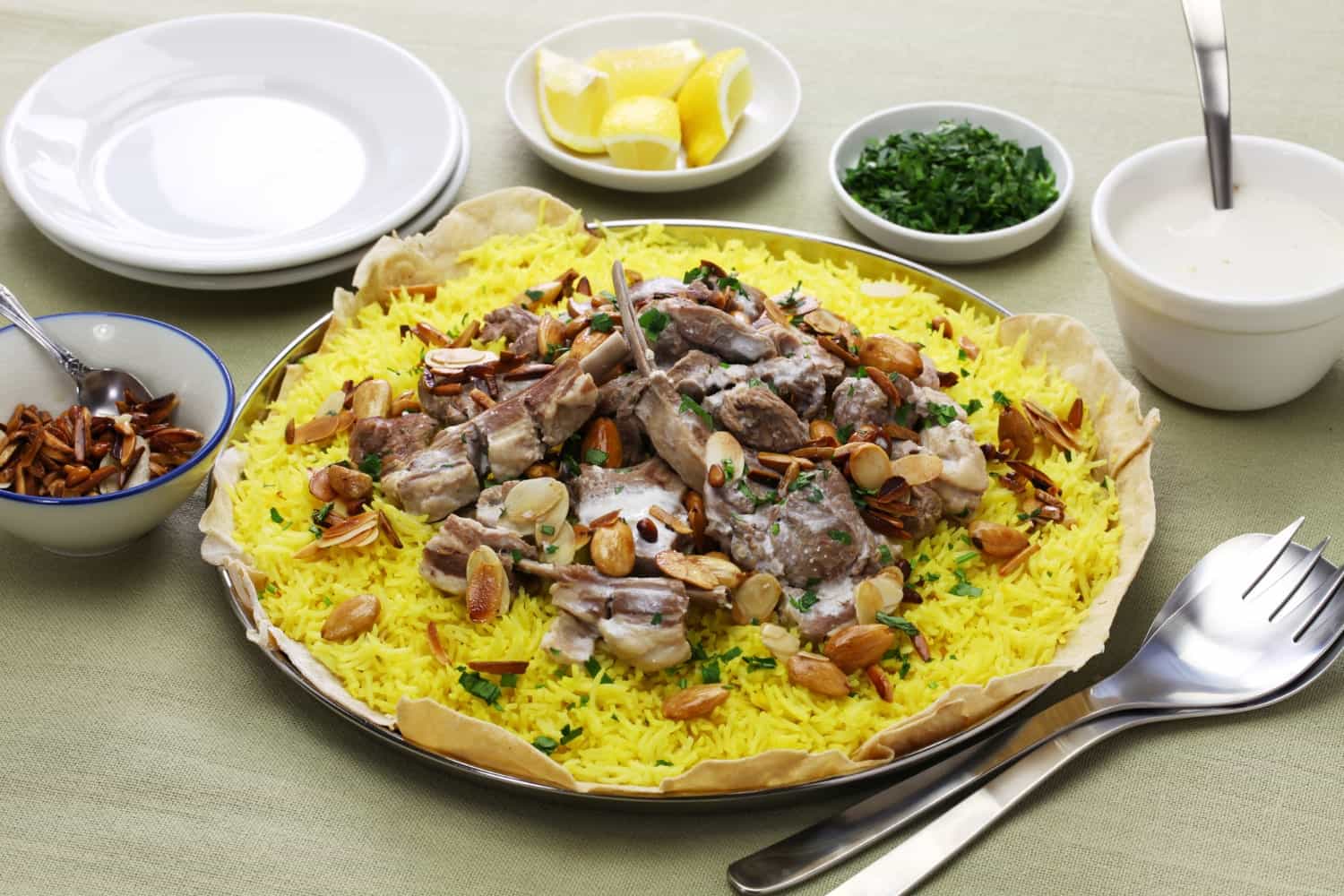
Mansaf is one of the most popular Levantine dishes that originated in Jordan and made it to other parts of the Levant as well as the Gulf of Arabia. In fact, it is even considered the national dish of Jordan. You may confuse it with the Saudi Kabsah at first, but there are many differences between them.
Mansaf is a large dish of yellow rice served with mouthwatering lamb. The lamb is cooked in a special sauce made from dried yoghurt, soaked in a generous bed of spices, and cooked until tender. These spices are what give the lamb its fermented and robust flavour that blends quite nicely with rice, offering satiety.
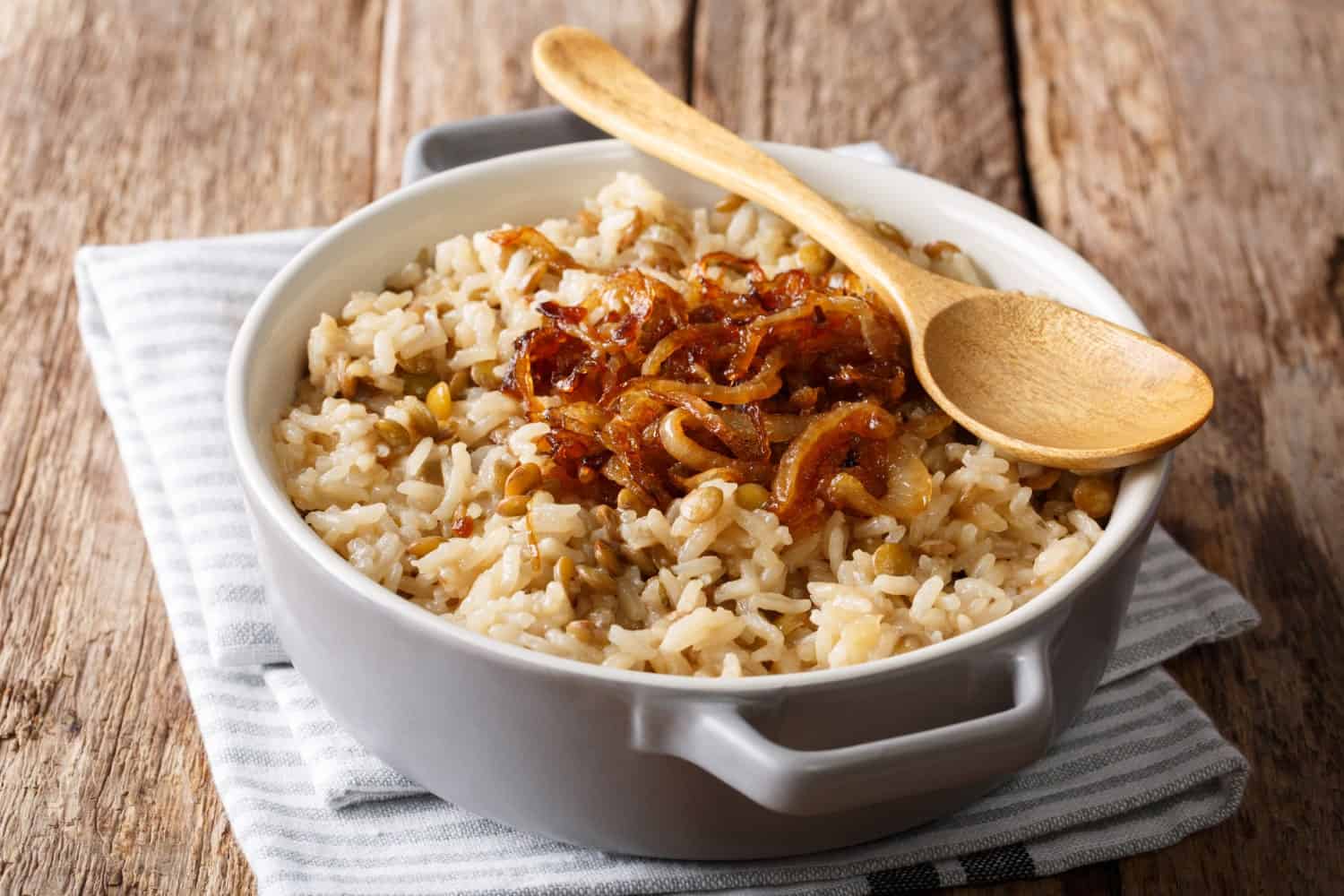
“Mujaddara” is an Arabic word that means “marked” or “spotted,” describing how this dish looks. It is a traditional dish in Levantine cuisine served across different countries. However, it originated in Lebanon and is deemed one of its popular national meals. Mujaddara also happens to be an ancient food that goes way back in time and is known in the rest of the Middle East.
This dish is a recipe where lentils and rice meet together, and before you even ask, no, it is not the same thing as Koshari. However, it is still a vegetarian dish, where rice, lentils, and onions are cooked together and soaked in herbs and yoghurt to provide a rich flavour.
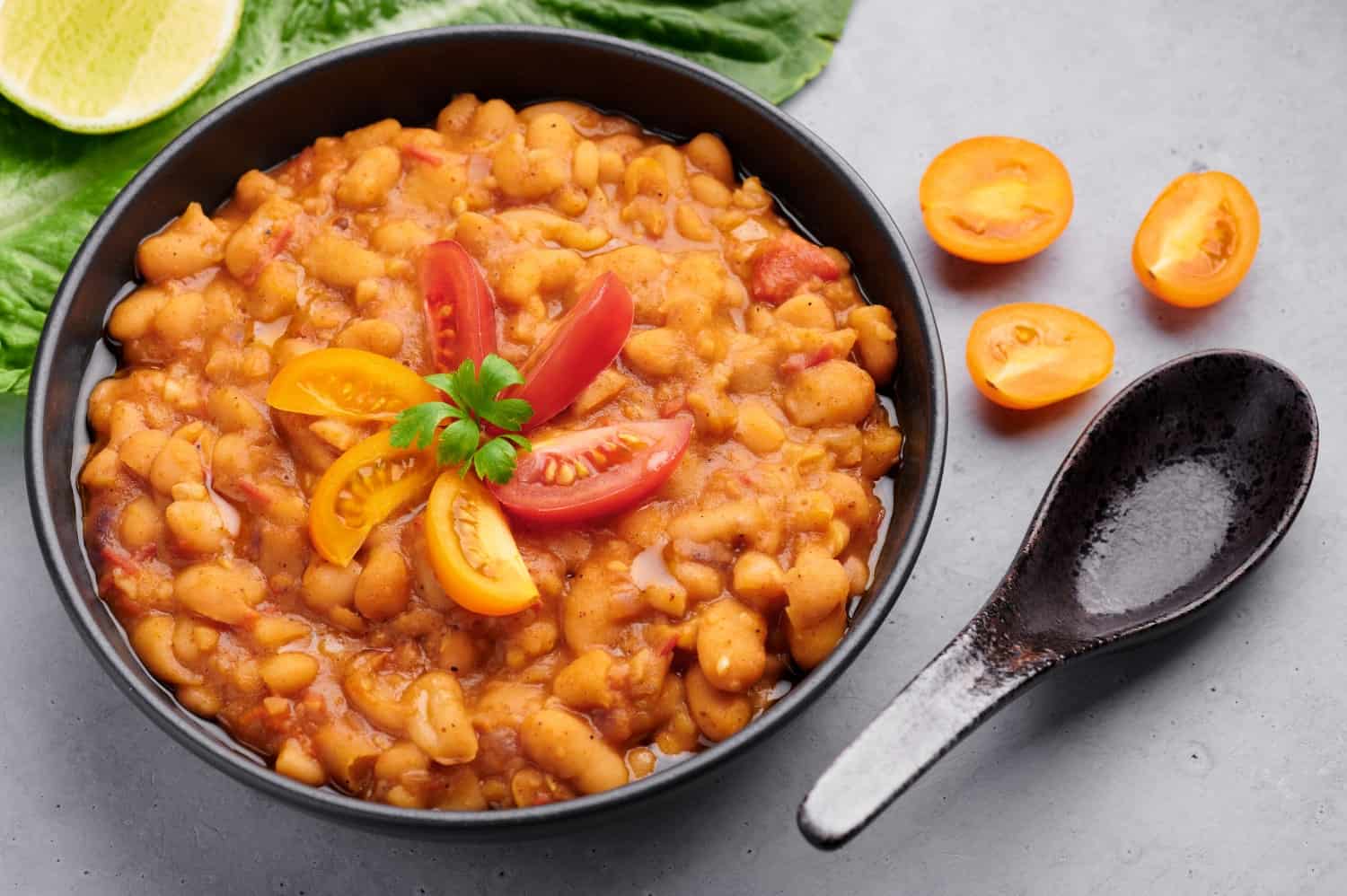
Ful Medames are fava beans cooked in a stew and served alongside flavourful ingredients that make the dish irresistible. It is a typical dish in Levantine cuisine, although people perceive it as the national dish of Egypt. Well, it seems that the Levantine and Egyptian cuisines go hand in hand when it comes to appetising dishes.
Ful medames is simply known as ful. It is cooked in so many different ways, which sets the Levantine version apart from the Egyptian one. In the Levant, ful has deemed a salad served with raw vegetables like tomatoes and cucumbers along with boiled eggs. Challah, a type of loaf bread, is also served to give the meal a carb boost.

Mezze is not a single dish but rather a selection of small plates that act as appetisers or hors d’oeuvre before the main course. In scarce instances, it serves as a meal on its own. Mezze is more or less similar to tapas in Spanish cuisine.
These small platters often serve bite-sized foods, finger foods, or Levantine dips. They can be anything from a small dish of ful medames, falafel bites, and French fries to hard cheeses, meatballs, or stuffed olives. The dips are usually the most famous ones in the Levant: Baba ghanoush and tahini. Pita bread is always served on the side to give the meal a more robust edge.

Raheb is a kind of salad widely served in Lebanon and other Levantine regions. It is also usually part of the platters served as a mezze. This kind of salad is based on roasted eggplants and is native to Lebanon more than other countries of the Levant. Interestingly, the word “raheb” is Arabic for a monk, and we have no idea what’s the connection between the dish and its name.
The dish contains a selection of roasted eggplants and aubergines along with finely chopped tomatoes, pickles, onion, cucumber, and parsley and is dressed with lemon juice and a generous dash of extra virgin olive oil.
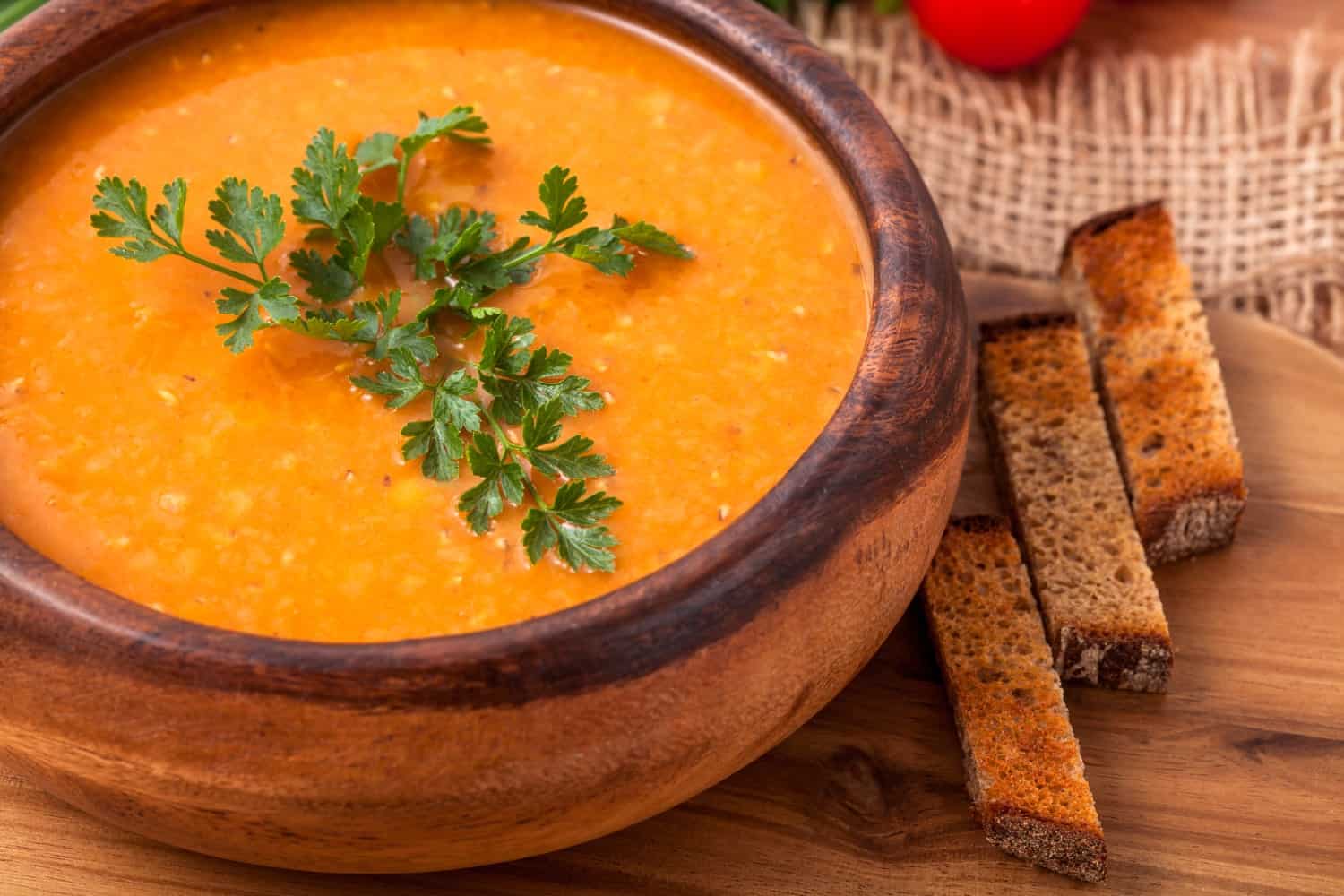
Lentils are widely used in the Middle East to make a variety of dishes, including the renowned lentil soup. Lentil soup is a huge part of Levantine cuisine; however, it is also a staple in the Middle Eastern region, acting as the predominant dish during the cold seasons. It is eaten as either a starter or a main course. Well, most of the Levantine dishes can be both ways.
This soup is made of broth and several spices, including cumin and lentils, of course. The addition of cumin helps in digesting the lentils much easier. The soup is heated until it gets thicker, offering a creamy look and taste. Lemon juice is squeezed over it to flavour the soup, then served alongside pita bread.
Dipping sauces are unique in flavouring up your meal, giving it a succulent spin that takes your taste buds on a fascinating trip through different relishes. Levantine cuisine has its fair share of dips used with most dishes, especially bread-based ones. While tahini and baba ghanoush come on top of the list, there is more to Levantine dips than just these.
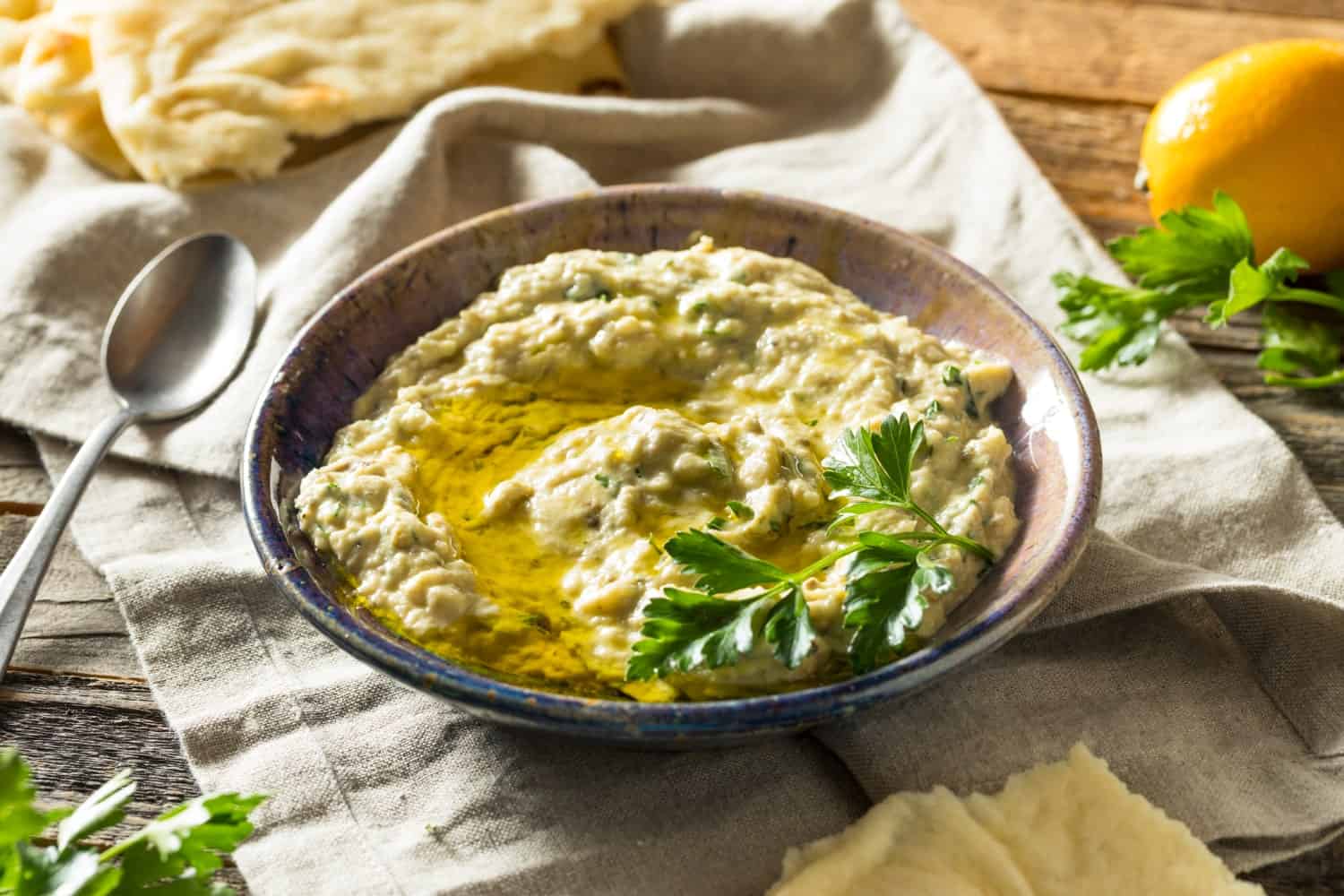
Baba ghanoush is a famous dipping sauce in Levantine cuisine. It is also called baba ghanouj, especially in Arabic-speaking countries, including Lebanon and Egypt. This dip is usually served as an appetiser before the main course is out. It pairs well with different meals and sandwiches. In many cases, people of the Levant eat it by dipping pita bread into it and enjoying its authentic taste.
This sauce is deemed vegetarian since it is made from one of the most highly nutritious vegetables, eggplant. The eggplant is first baked or broiled until it softens up. This eases the process of peeling and mashing its insides. It then gets mixed with olive oil, lemon juice, salt, pepper, and tahini sauce.
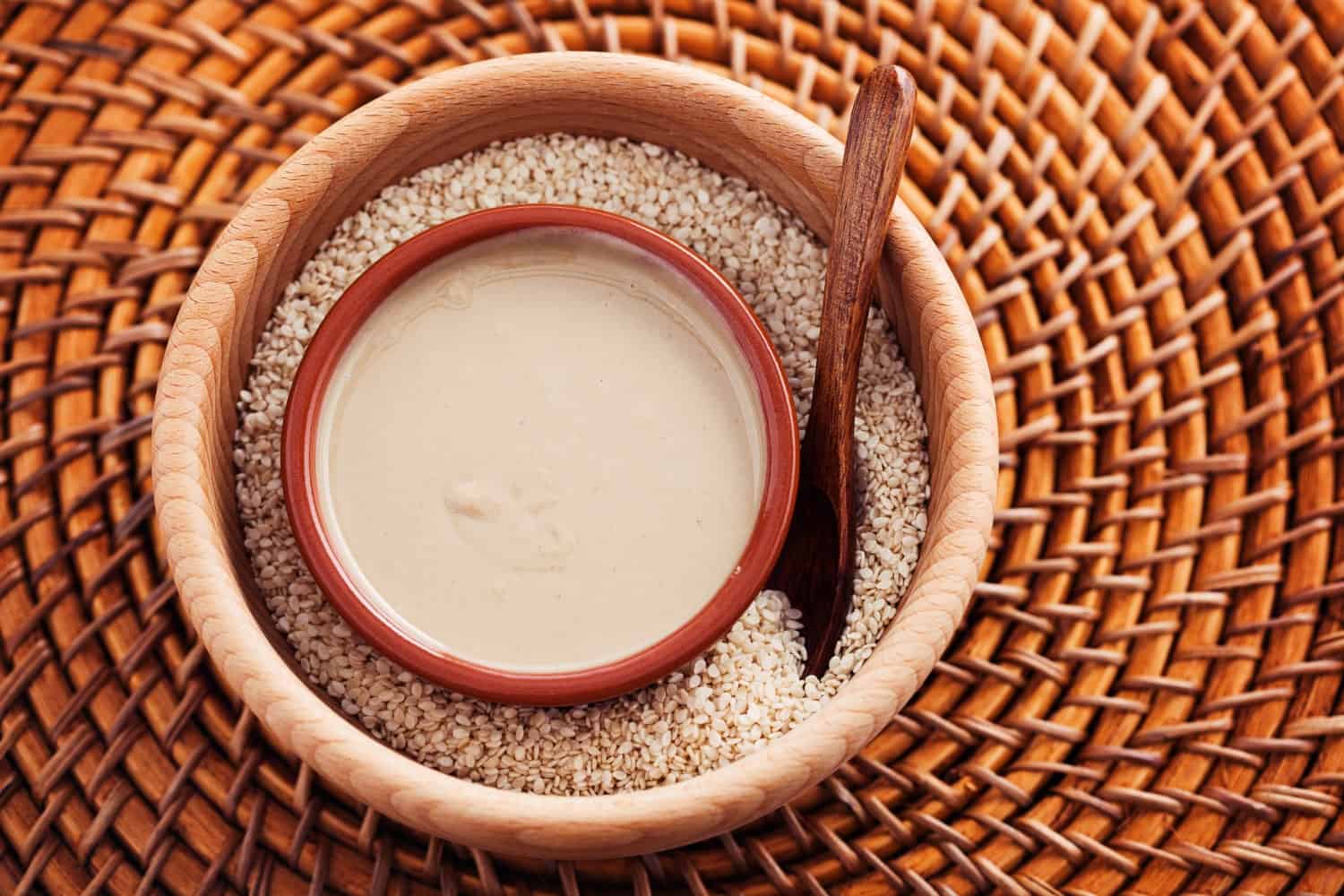
Tahini is one of the most popular condiments in the Middle Eastern region, especially the Levant. It is commonly used alongside the traditional dishes of Levantine cuisine. If you have ever tried oriental food in the Arab world, chances are you already know how it tastes. Tahini pairs well with falafel, beef shawarma, and kofta.
It is made by grinding toasted hulled sesame seeds, which gives it that bitter, nutty flavour with mildly sweet notes. It is mixed with other ingredients like olive oil, minced garlic, cumin, salt, pepper, and lemon juice. Just like baba ghanoush, it is usually eaten with toasted pieces of pita bread and serves as an appetiser. It is also used to create other dipping sauces, including baba ghanoush and hummus.
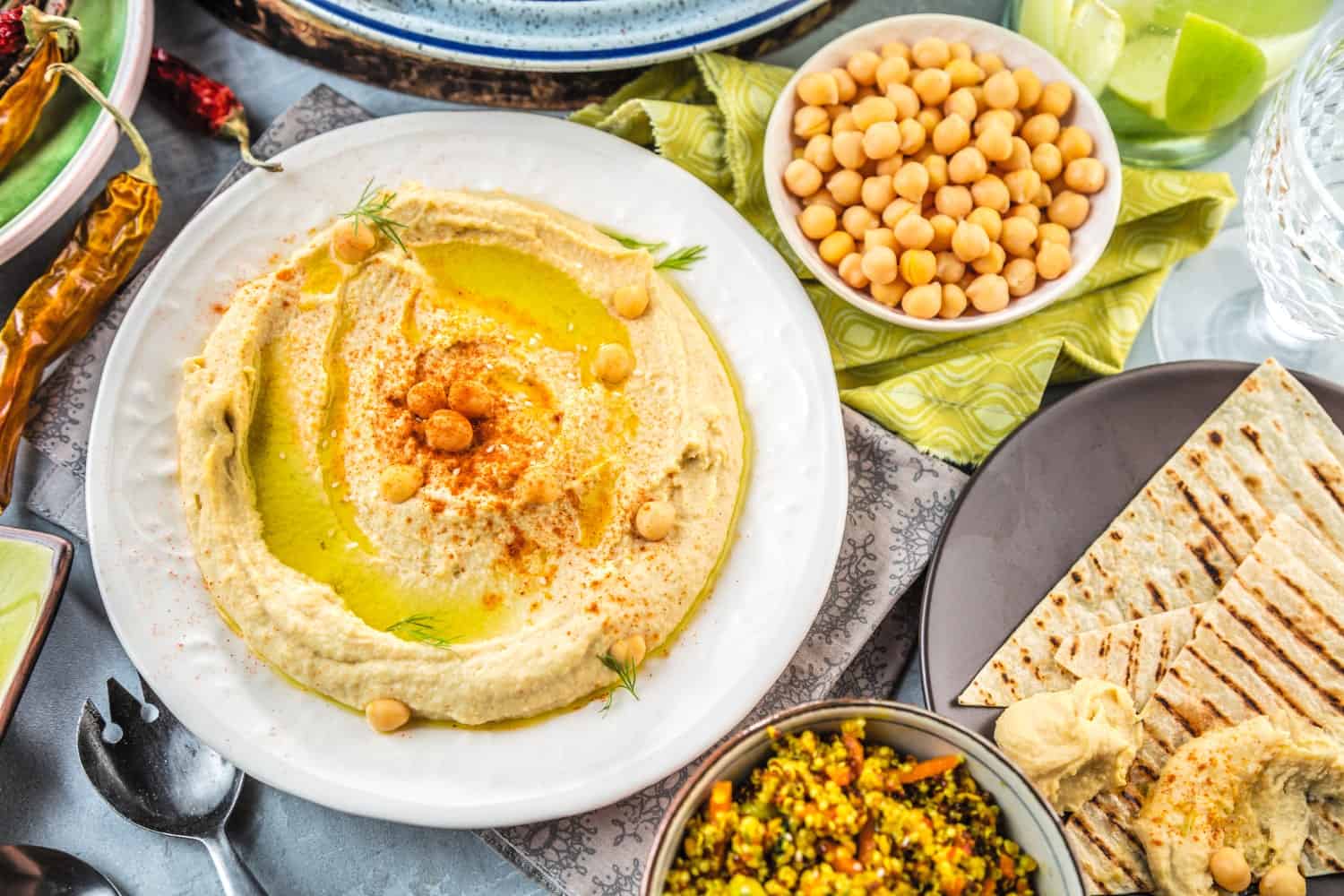
Hummus is yet another creamy paste that is quite popular in Levantine cuisine. It pairs perfectly with crunchy veggies or pita bread like every other Levantine paste. The flavour of hummus can be described as rich and robust, given the presence of garlicky notes that give it its aromatic taste.
As previously mentioned, hummus needs tahini to be made into the creamy texture of a dipping paste. It is made by cooking chickpeas until they soften a little, then they get mashed and blended with tahini, garlic, olive oil, and lemon juice. Although it consists of tahini, it has a distinctive flavour that cannot be compared to other sauces.
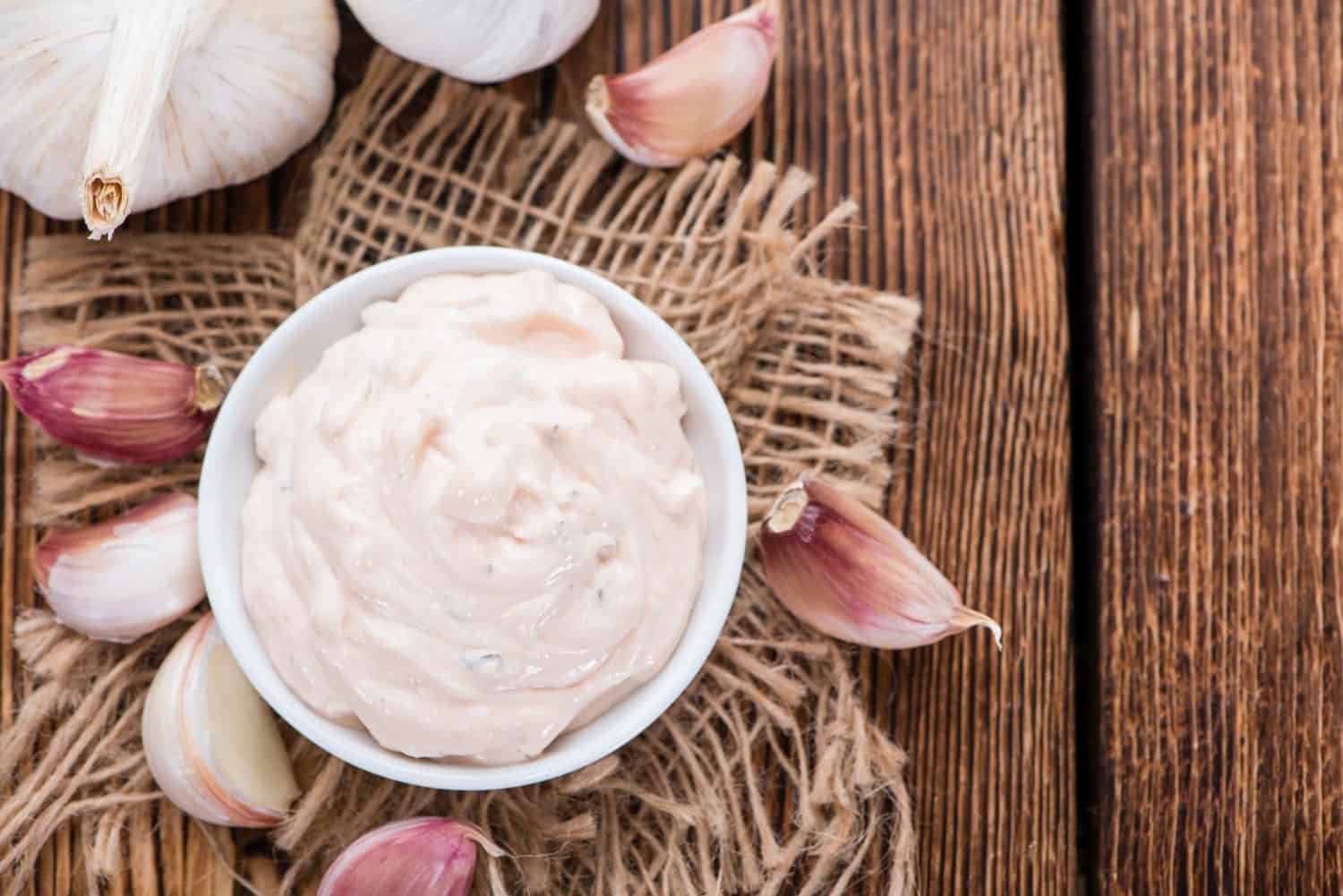
“Toumeyya” is derived from “Toum,” the Arabic word for garlic. This condiment is one of the most famous in Levantine cuisine. It is used as an alternative to mayonnaise, lacking the egg ingredient. Also, it is renowned for being a staple flavour-up to chicken shawarma, yet it is still used alongside kebabs and grilled meat.
Toumeyya is made from loads of raw garlic blended with lemon juice, oil, water, and salt. It is stirred well until it thickens and reaches this perfect creamy texture. Not only is toumeyya a delicious sauce from Levantine cuisine, but it also pairs well with different dishes and is easy to make in a snap.

Muhammara is another Levantine sauce that originated in Syria. Turkish cuisine also seems to lay claim to the Muhammara. However, the Syrian version is quite different from other variations used worldwide, for it uses dried peppers that grow in Aleppo. The sauce is mildly spicy and is commonly eaten with pita bread or grilled beef.
Walnut is, surprisingly, among the ingredients used to create this red pepper sauce, giving it a mild nutty flavour.

Similar to Baba ghanoush, moutabal is a condiment based on eggplants, yet it has a different taste and texture. It is a famous Levantine dip used with pita bread as an appetiser. Having a dipping sauce with pita bread before the main course seems to be the prevalent Levantine tradition, and we absolutely love it.
Moutabal or mutabal is made from eggplants mixed with tahini sauce, lemon juice, Greek yoghurt, salt, and crushed garlic. It has a thick texture, falling between baba ghanoush and hummus, yet it has a deeper aroma and smokier taste.